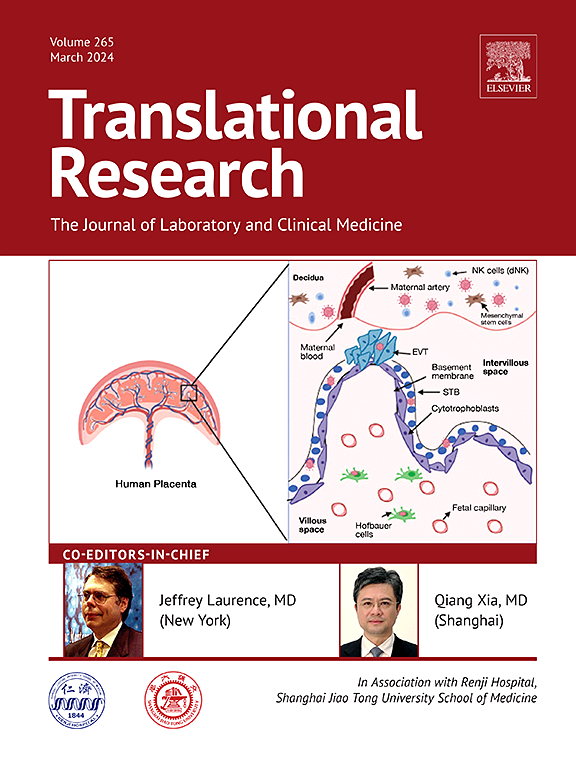The role of FAK in renal collecting duct in the progression from acute kidney injury to chronic kidney disease
IF 5.9
2区 医学
Q1 MEDICAL LABORATORY TECHNOLOGY
引用次数: 0
Abstract
AKI and CKD are major global health problem, which closely connected and promote each other. The mechanism may be related to maladaptive repair after renal tubular injury. FAK is a non-receptor tyrosine kinase located at the intersection of multiple cell signal transduction pathways. Previous studies have suggested that FAK may be involved in the repair process after kidney injury, but its role and mechanism in the process of AKI to CKD need to be further elucidated. In this study, we found that FAK was up-regulated in AKI to CKD and mainly localized in renal collecting ducts. Therefore, we generated renal collecting duct specific FAK knockout mice, which were treated with RIRI and UUO models to simulate the progression of AKI and CKD. This study for the first time found that the specific knockout of FAK in renal collecting duct can reduce oxidative stress and inflammatory response in the early stage of kidney injury, improve renal function, inhibit renal fibrosis, and significantly prolong the survival time of mice. In terms of mechanism, FAK knockout in renal collecting duct may affect inflammatory cell infiltration through KLF5 signaling pathway, regulate the trend of adaptive repair and maladaptive repair of renal tubular cells after injury, and promote the damaged kidney tubules restore health. Therefore, this study confirmed that loss of FAK function in the renal collecting duct can delay the progression of AKI to CKD by inhibiting inflammation-regulated maladaptive kidney repair, which providing a novel potential strategy for the clinical treatment of AKI to CKD.
肾集管中FAK在急性肾损伤向慢性肾病进展中的作用
AKI与CKD是密切相关、相互促进的全球性重大健康问题。其机制可能与肾小管损伤后的不适应修复有关。FAK是一种非受体酪氨酸激酶,位于多种细胞信号转导通路的交叉点。既往研究提示FAK可能参与肾损伤后的修复过程,但其在AKI到CKD过程中的作用和机制有待进一步阐明。在本研究中,我们发现FAK在AKI到CKD的过程中上调,并且主要局限于肾集管。因此,我们制造了肾收集管特异性FAK敲除小鼠,用RIRI和UUO模型处理,模拟AKI和CKD的进展。本研究首次发现特异性敲除肾集管FAK可降低肾损伤早期的氧化应激和炎症反应,改善肾功能,抑制肾纤维化,显著延长小鼠的存活时间。从机制上看,肾集管FAK敲除可能通过KLF5信号通路影响炎症细胞浸润,调节肾小管细胞损伤后适应性修复和不适应性修复的趋势,促进受损肾小管恢复健康。因此,本研究证实,肾集管中FAK功能的丧失可以通过抑制炎症调节的不适应肾修复来延缓AKI向CKD的进展,这为AKI向CKD的临床治疗提供了一种新的潜在策略。
本文章由计算机程序翻译,如有差异,请以英文原文为准。
求助全文
约1分钟内获得全文
求助全文
来源期刊

Translational Research
医学-医学:内科
CiteScore
15.70
自引率
0.00%
发文量
195
审稿时长
14 days
期刊介绍:
Translational Research (formerly The Journal of Laboratory and Clinical Medicine) delivers original investigations in the broad fields of laboratory, clinical, and public health research. Published monthly since 1915, it keeps readers up-to-date on significant biomedical research from all subspecialties of medicine.
 求助内容:
求助内容: 应助结果提醒方式:
应助结果提醒方式:


